Flying Missions in a remote desert: In search of our ancestral trails VI
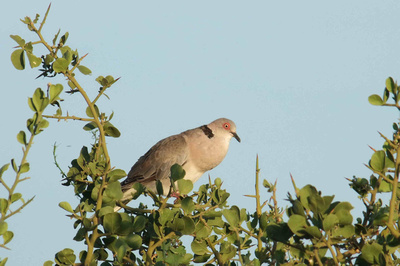
 Welcomed by the earliest birds, we started our first morning in Ileret: a remote area to the east of Lake Turkana, almost at the Kenya-Ethiopia border.
Welcomed by the earliest birds, we started our first morning in Ileret: a remote area to the east of Lake Turkana, almost at the Kenya-Ethiopia border.
The Ileret area is very rich in fossil exposures. Near the TBI Ileret Camp, there are several sites where Pleistocene hominids or Holocene human remains have been recovered. Among them are some of the rarest fossils ever found: fossil footprints of animals and early humans. Recording not only the shape of early human feet, the foot prints also offer clues to a long lost scene: hominids walking in groups. Rather like a snapshot in the eyes of paleontologists, they provide a unique perspective for the study of early human behaviors, adding colors to the whole picture of human evolution.
For people who dig for fossils in the Lake Turkana area, work begins before the first light breaks out of the horizon. Here in the tropical desert, the brutal sun can easily subdue anybody through heatstroke and dehydration, let along quite a few other perils such as thorny bushes, formidable scorpions and venomous snakes. Therefore, mornings and evenings are the sweet hours of the day, while there is pretty nothing to do in the middle of the day but to rest in the shade. That worked for our team as well. In addition to such limits, we had to submit to yet another dictator: the wind!
We thought that the experience of windy weathers we had in Turkwel and Lothagam was pretty enough. Unfortunately, the temper of the wind in Ileret was even more unfathomable. The wind is ever gusty in Ileret during the day time and there is hardly a moment when the air is calm. The situations only got worse when we were out in the field, where there is less vegetation coverage. The only window of opportunities for our drone was either in the early morning or in the late afternoon, when the wind was just a bit calmer. That was still quite a challenge for Gonzalo Martinez, our pilot of the remote controlled copter, even as experienced and skillful as he is.
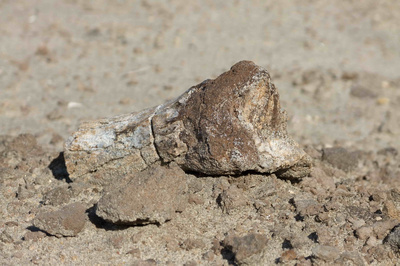

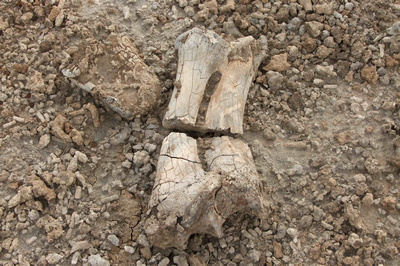

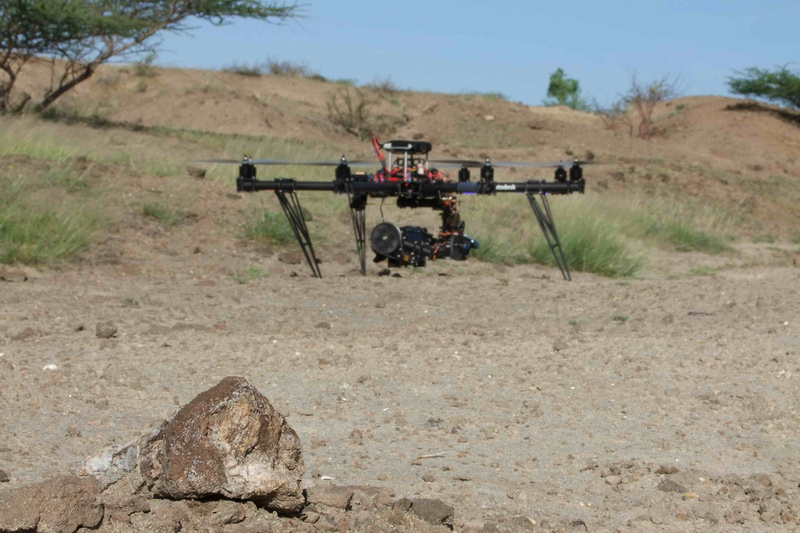

Under such field conditions, we brought our intelligent agent to a fossil site near the base camp. And it is really a rich site! As we walked through the terrain, we found many pieces of fossils just on the ground. Some were fish bones, turtle shells and crocodile teeth, indicating that the area was once under water. Others were mammal bones and teeth of different genera and sizes, preserved in the lake sediments. Although noticeable or even conspicuous, most of the fossils there were either fragmentary or unidentifiable, therefore, not so much worth collecting.
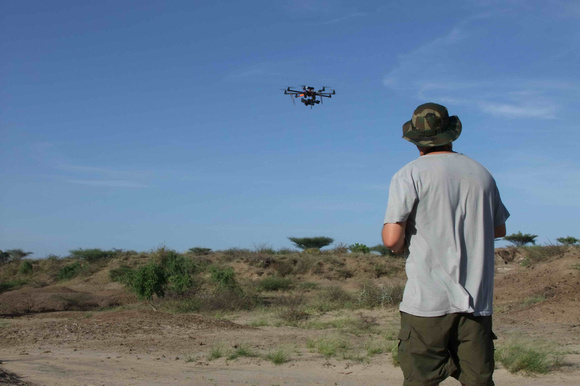

And there, we started our search for fossils, not on the ground, but in the air! How? Simply put, we took aerial photos from high up and then zoomed them in on a computer screen to see if there is anything interesting lying on the ground. The same trick as we did on the Lothagam stone circles.
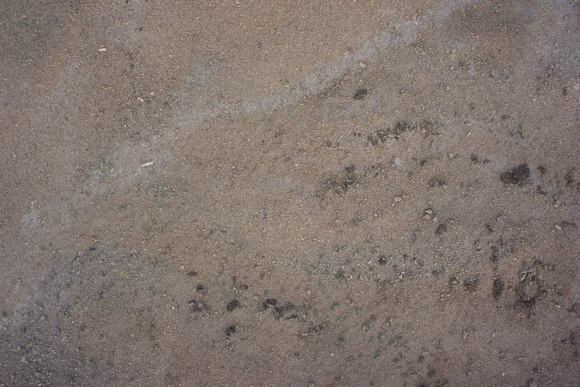

Photo courtesy of Gonzalo Martinez, Autodesk
However, even though there were many fossil pieces on the ground, the aerial photos did not come out very good. It worked okay with big fossil pieces, such as long bones of medium-sized animals. But the resolution of our images was not high enough to distinguish small fossil pieces from the stone scatterings.
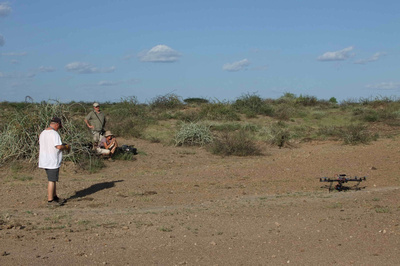

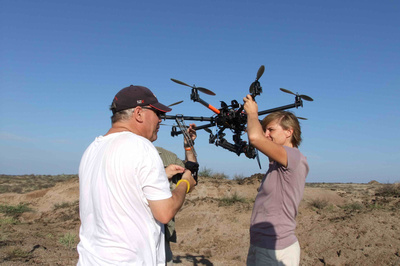

Trying to push the limits of our “flying spider” as well as the cameras we had, our expedition leader Louise Leakey suggested another test flight on an even richer site in the afternoon. Instead of a Sony NEX-7, we had a Canon 600D (Rebel T3i) with an 18-55mm kit lens on board to do the photography. This time, we had some technical problems from the camera and even though we did solve them in the end, the results were not better. It seemed to us that the entry-level cameras we had, represented by the Sony NEX-7 and the Canon 600D, either do not have enough pixel counts, or do not have quality lenses that enable us to do relatively detailed surveys from the air.
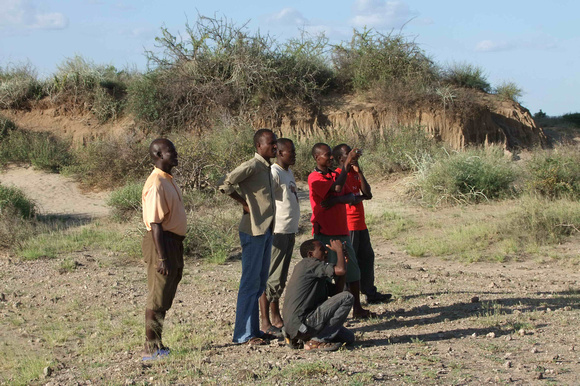

The field survey team was with us, too. They are the real people who walk miles on end in such areas and search for fossils on regular bases. It was the first time for them to see such high-tech equipment working out in the field. They were all very excited about how technology could possibly change the way of doing field research in the future.
Missions failed? Well, at least, we tested the machine on the spot and understood what the problems were. And the Lake Turkana area did teach us a lesson about how unpredictable the real field conditions could be. Next time, if possible, we could try a drone that can handle the wind much better than the Octo-copter and can carry a professional level camera plus top quality lenses on board. As the technology advances and the cost goes down, such equipment could be available in a few years’ time, when we might have a more labor-saving way to doing field surveys in a harsh place such as the Lake Turkana region. Our pioneer of technology Shaan Hurley, from Autodesk, was very confident about that.
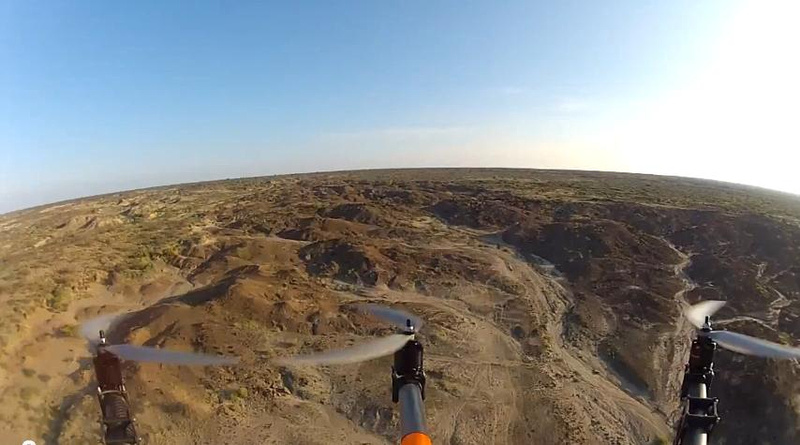

Although photos did not work very well at these sites, we could still shoot aerial videos around the fossil sites. In addition to the Sony NEX-7, Gonzalo had a GoPro camera which could be fixed on top of the copter. It offered an extra wide angle of view, distinct to that of the Sony NEX-7 mounted on the articulated frame below the copter. The most obvious difference was that there were always three propellers of the copter seen in the frame, which makes the viewers feel that they were sitting in the copter themselves. Very cool, indeed! Aerial Video edited by Gonzalo Martinez
Is this the end of everything? No! Science and technology are of great fun, too! Being grateful for the invaluable experiences we had in the field, we were all ready to share them with others, especially the locals in Ileret. A lot of stories to tell! (To be continued)
View and download photos of this post: Flying missions